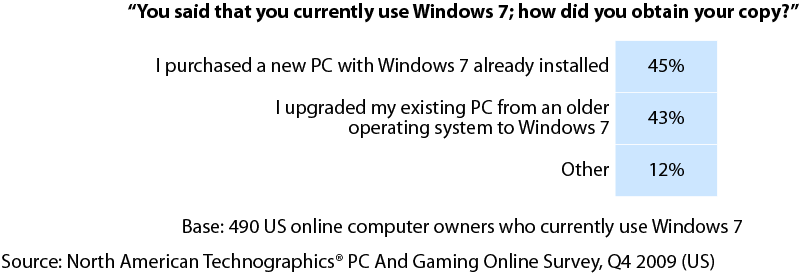Windows 7 Early Adopters Were Satisfied Upgraders
We've just published two new reports concerning Windows 7 adoption and satisfaction, leveraging Forrester's Consumer Technographics(R) data.
The reports show that Windows 7 penetrated the consciousness of the market by the end of 2009, with a strong majority of US consumers aware of the product. We also found that consumers who adopted Windows 7 in Q4 were generally very satisfied with their Windows 7 PCs.
Perhaps the most interesting finding of the reports involves upgrade behaviors. Historically, most consumers have not upgraded their PCs with new OSes — though Mac users and some technophile consumers have been an exception on this count. Instead, the majority of consumers have acquired new OSes when they purchase their new PC. These are known as "replacement cycle upgrades."
With Windows 7, however, upgrade behavior was much stronger. Why? In short, Windows 7 is a thinner client program than was Windows Vista, meaning that it works well on older hardware configurations. In the past, OSes were designed with Moore's Law as an underlying assumption — that is, that newer PC hardware would be significantly faster and more powerful than the previous generation's hardware. Windows 7, however, is a less burdensome OS than Windows Vista. The rise of Netbooks, the physical assets of multi-PC households, and an attachment by many consumers to their Windows XP machines all contributed to the need for a sleeker, thinner Windows OS, which Windows 7 delivered.
Among early adopters of Windows 7, in Q4, for the first time upgrading behavior matched replacement cycle purchasing, as this Figure shows:

We invite clients to read our full reports!
